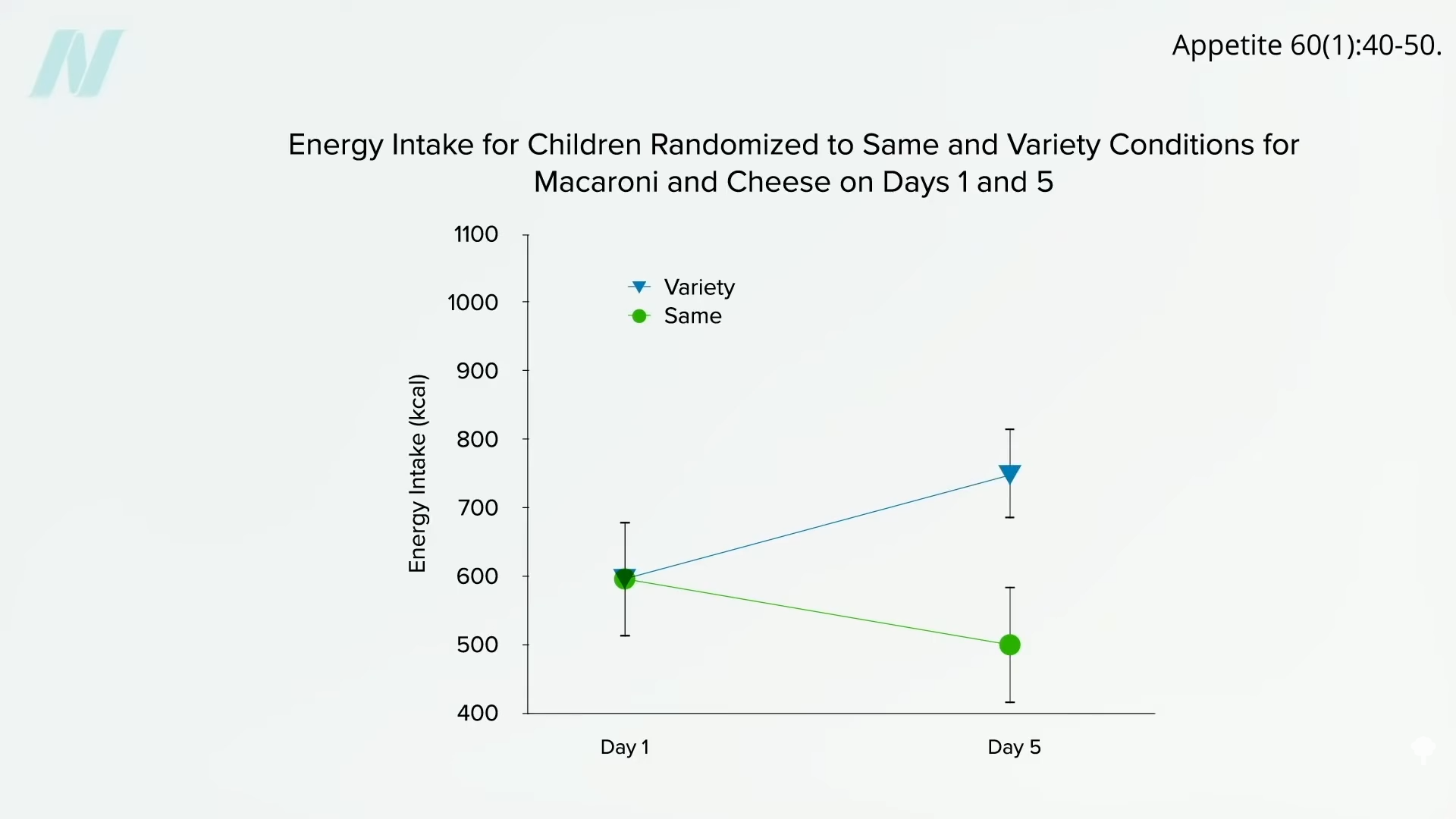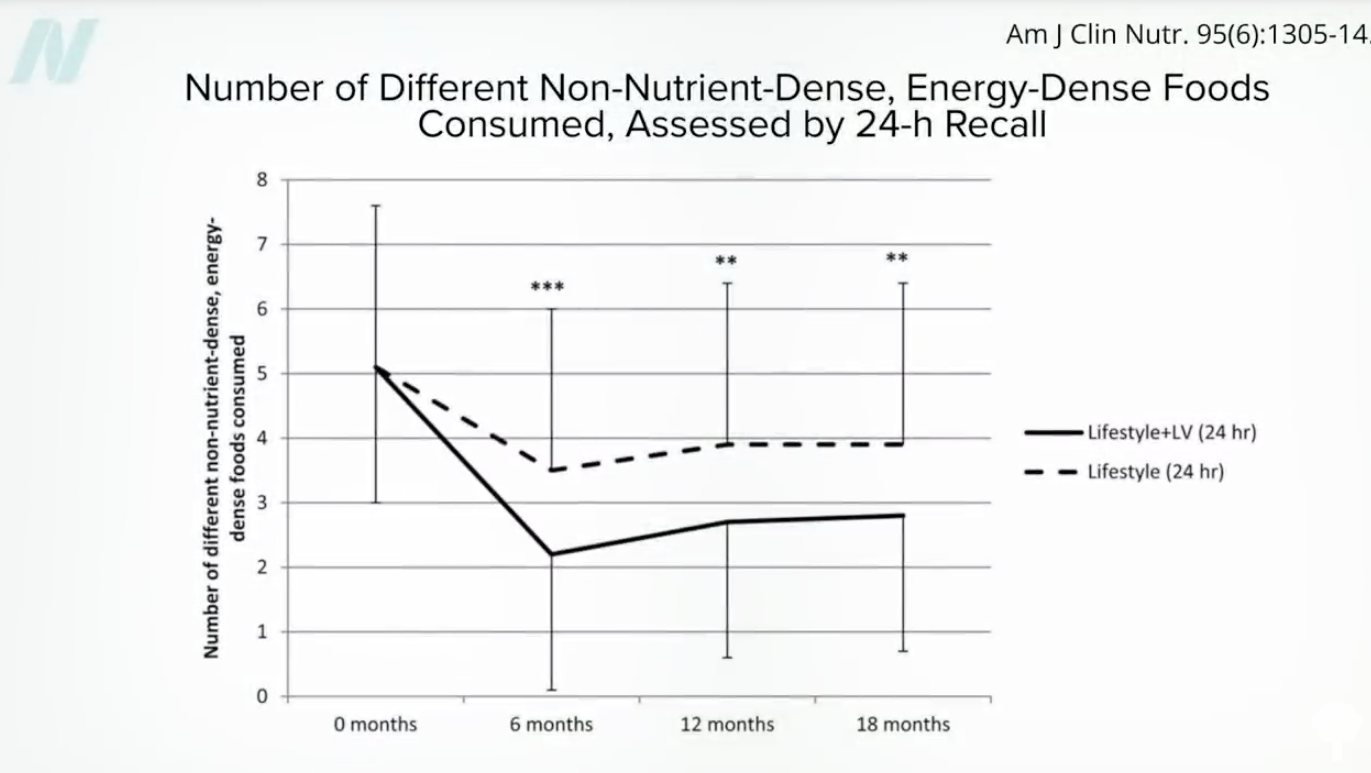Massive Meals makes use of our hard-wired drive for dietary range towards us.
How did we evolve to unravel the daunting process of choosing a food plan that provides all of the important vitamins? Dietary range. By consuming quite a lot of meals, we enhance our possibilities of hitting all of the bases. If we solely ate for pleasure, we’d simply keep on with our favourite meals to the exclusion of all others, however we now have an innate tendency to modify issues up.
Researchers discovered that examine individuals ended up eating extra energy when supplied with three completely different yogurt flavors than only one, even when that one is the chosen favourite. So, variation can trump sensation. They don’t name it the spice of life for nothing.
It seems to be one thing we’re born with. Research on newly weaned infants courting again practically a century present that infants naturally select quite a lot of meals even over their most well-liked meals. This tendency appears to be pushed by a phenomenon referred to as sensory-specific satiety.
Researchers discovered that, “inside 2 minutes after consuming the take a look at meal, the pleasantness of the style, odor, texture, and look of the eaten meals decreased considerably greater than for the uneaten meals.” Take into consideration how the primary chunk of chocolate tastes higher than the final chunk. Our physique tires of the identical sensations and seeks out novelty by rekindling our urge for food each time we’re introduced with new meals. This helps explain the “dessert impact,” the place we could be stuffed to the gills however achieve a second wind when dessert arrives. What was adaptive for our historical ancestors to take care of dietary adequacy could also be maladaptive within the age of weight problems.
When examine individuals ate a “assorted four-course meal,” they consumed 60 p.c extra energy than these given the identical meals for every course. It’s not solely that we get bored; our physique has a unique physiological response.
As you’ll be able to see beneath and at 2:13 in my video How Variation Can Trump Sensation and Lead to Overeating, researchers gave individuals a squirt of lemon juice, and their salivary glands responded with a squirt of saliva. However after they got lemon juice ten occasions in a row, they salivated much less and fewer every time. After they bought the identical quantity of lime juice, although, their salivation jumped proper again up. We’re hard-wired to reply otherwise to new meals.  Whether or not meals are on the identical plate, are on the identical meal, or are even eaten on subsequent days, the higher the range, the extra we are likely to eat. When children had the identical mac and cheese dinner 5 days in a row, they ended up consuming tons of fewer energy by the fifth day, in comparison with children who bought quite a lot of completely different meals, as you’ll be able to see beneath and at 2:35 in my video.
Whether or not meals are on the identical plate, are on the identical meal, or are even eaten on subsequent days, the higher the range, the extra we are likely to eat. When children had the identical mac and cheese dinner 5 days in a row, they ended up consuming tons of fewer energy by the fifth day, in comparison with children who bought quite a lot of completely different meals, as you’ll be able to see beneath and at 2:35 in my video.

Even simply switching the form of meals can result in overeating. When children had a second bowl of mac and cheese, they ate considerably extra when the noodles have been modified from elbow macaroni to spirals. Individuals allegedly eat as much as 77 p.c extra M&Ms in the event that they’re introduced with ten completely different colours as an alternative of seven, regardless that all the colours style the identical. “Thus, it is clear that the higher the variations between meals, the higher the enhancement of consumption,” the higher the impact. Alternating between candy and savory meals can have a very appetite-stimulating impact. Do you see how, on this method, including a food plan soda, as an example, to a fast-food meal can result in overconsumption?
The staggering array of recent meals decisions could also be one of many components conspiring to undermine our urge for food management. There at the moment are tens of hundreds of various meals being sold.
The so-called grocery store food plan is without doubt one of the most profitable methods to make rats fats. Researchers tried high-calorie meals pellets, however the rats simply ate much less to compensate. So, they “subsequently used a extra excessive food plan…[and] fed rats an assortment of palatable meals bought at a close-by grocery store,” including such fare as cookies, sweet, bacon, and cheese, and the animals ballooned. The human equal to maximize experimental weight achieve has been dubbed the cafeteria food plan.
It’s form of the other of the unique meals allotting machine I’ve talked about earlier than. As a substitute of all-you-can-eat bland liquid, researchers supplied free all-you-can-eat entry to elaborate merchandising machines stocked with 40 trays with a dizzying array of meals, like pastries and French fries. Contributors discovered it unattainable to take care of power steadiness, persistently consuming greater than 120 p.c of their calorie necessities.
Our understanding of sensory-specific satiety can be utilized to assist individuals achieve weight, however how can we use it to our benefit? For instance, would limiting the number of unhealthy snacks assist individuals drop extra pounds? Two randomized managed trials made the try and failed to point out considerably extra weight reduction within the decreased selection food plan, however additionally they didn’t get individuals to make a lot of a dent of their diets. Simply reducing down on one or two snack varieties appears inadequate to make a lot of a distinction, as seen beneath and at 4:44 in my video. A extra drastic change could also be wanted, which we’ll cowl subsequent.











